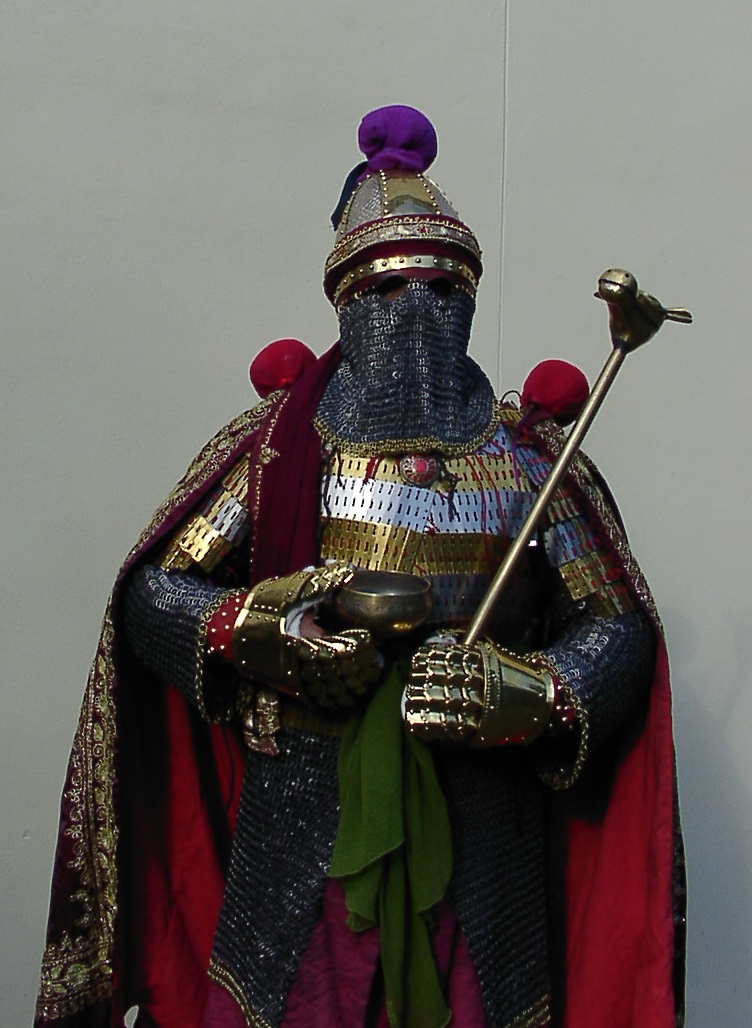
Spahbed
Spāhbed (also spelled spahbod and spahbad)[1] is a Middle Persian title meaning "army chief" used chiefly in the Sasanian Empire. Originally there was a single spāhbed, called the Ērān-spāhbed, who functioned as the generalissimo of the Sasanian army. From the time of Khosrow I (r. 531–579) on, the office was split in four, with a spāhbed for each of the cardinal directions.[2] After the Muslim conquest of Persia, the spāhbed of the East managed to retain his authority over the inaccessible mountainous region of Tabaristan on the southern shore of the Caspian Sea, where the title, often in its Islamic form ispahbadh (Persian: اسپهبذ; in Arabic: اصبهبذ ʾiṣbahbaḏ), survived as a regnal title until the Mongol conquests of the 13th century.[3] An equivalent title of Persian origin, ispahsālār or sipahsālār, gained great currency across the Muslim world in the 10th–15th centuries.
The title was also adopted by the Armenians (Armenian: սպարապետ, [a]sparapet) and the Georgians (Georgian: სპასპეტი, spaspeti), as well as Khotan (spāta) and the Sogdians (spʾdpt) in Central Asia. It is also attested in Greek sources as aspabedēs (ἀσπαβέδης).[2][3] The title was revived in the 20th century by the Pahlavi dynasty, in the Modern Persian form sepahbod (سپهبد), equivalent to a three-star Lieutenant General, ranking below arteshbod (full General).
In Armenia[edit]
The Kingdom of Armenia, which was ruled by a branch of the Parthian Arsacid dynasty, adopted the term first in its Old Persian form, giving Armenian [a]parapet and then again, under Sasanian influence, from the Middle Persian form, giving the form aspahapet. The title was used, as in Persia, for the commander-in-chief of the royal army, and was borne in hereditary right by the Mamikonian family.[3]
In Georgia[edit]
The institution of the Georgian rank spaspet, like its rough equivalent sparapet in neighboring Armenia, was designed under the influence of the Sasanian Persian spahbed, but differed in that it was a non-hereditary rank and included not only military but also civil functions.[16]
According to the medieval Georgian chronicles, the rank of spaspet was introduced by the first king P’arnavaz in the 3rd century BC.
The office, in a variously modified manner, survived into medieval and early modern Georgia down to the Russian annexation early in the 19th century.